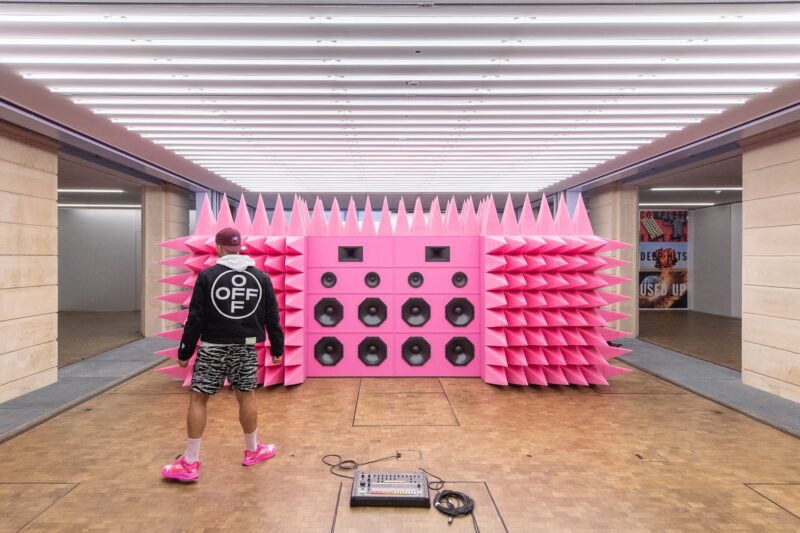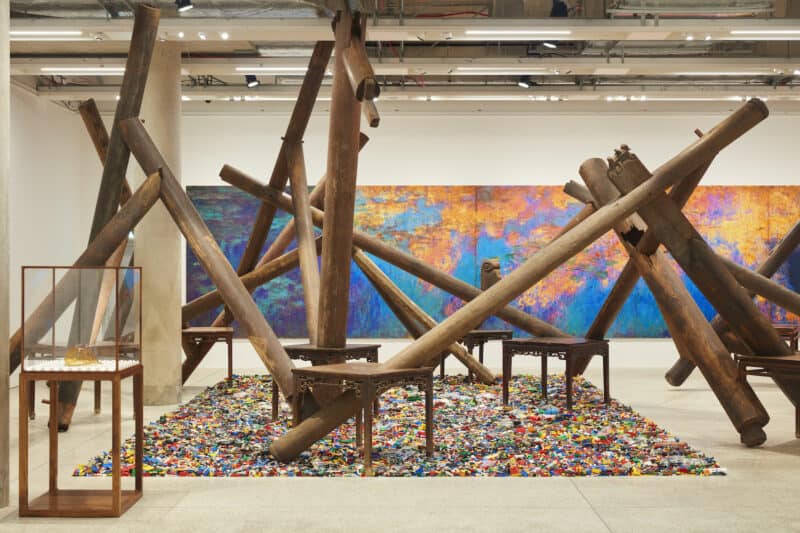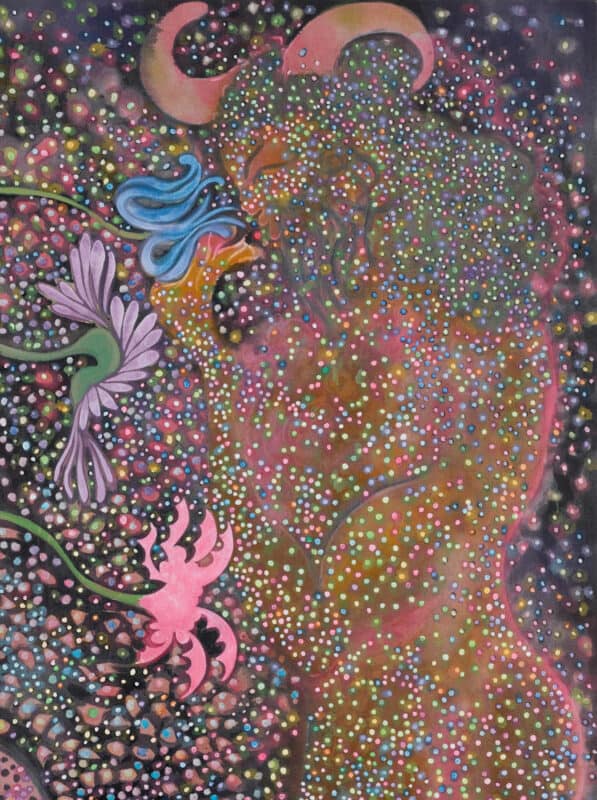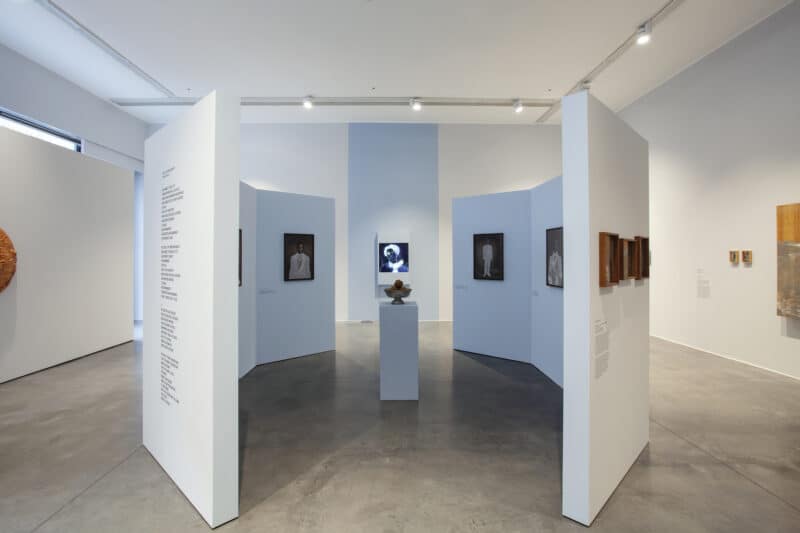
Stan Douglas, Doppelgänger, 2019 © Stan Douglas Installation view La Biennale di Venezia, 58th International Art Exhibition, 2019 Courtesy the artist, Victoria Miro, and David Zwirner Photography: Jack Hems
Victoria Miro is to present Doppelgänger, a video installation by Stan Douglas. Debuted at La Biennale di Venezia, 58th International Art Exhibition, May You Live in Interesting Times, this ambitious work will be exhibited for the first time in the UK. Doppelgänger will concurrently be on view at David Zwirner, New York, opening on 16th January 2020.
Since the late 1980s, Stan Douglas has created films and photographs – and more recently theatre productions and other multidisciplinary projects – that investigate the parameters of their medium. His ongoing inquiry into technology’s role in image-making, and how those mediations infiltrate and shape collective memory, has resulted in works that are at once specific in their historical and cultural references and broadly accessible.
Doppelgänger is set in an alternative present. Displayed on two square-format, translucent screens, each of which can be viewed from both sides, the looped narrative unfolds in side-by-side vignettes that depict events on worlds that are light years apart. When one spacecraft embarks on its journey, another is launched at the same time in a parallel reality. Alice, a solitary astronaut, is teleported to a distant planet, and so is her double. Then, Alice and her ship, the Hermes II, for unknown reasons, return. Alice assumes her mission has failed and she has somehow returned home; but she has, in fact, arrived at a world where everything, from writing to the rotation of the sun, is literally the reverse of what she once knew.
The action on the two screens proceeds alternately in tandem and in parallel, seamlessly moving between two oppositional scenarios of Alice’s reception back on Earth. In one version, Alice is received compassionately and welcomed home, whereas in the other, she is treated as an outlaw or a potential threat. Douglas intentionally heightens the viewer’s feeling of displacement through a continual sense of reversal and mirroring, both in the form and content of his installation. Since the early 1990s, multi-channel video installations have been an integral part of Douglas’s practice, allowing for the simultaneous presentation of multiple, overlapping narratives or vantage points, and with Doppelgänger he extends his ongoing exploration of both nonlinear narratives and alternate histories: the omnipresent sense of doubling that is built into the structure of the work implicitly suggests the possibility of simultaneous, diverging experiences and realities.
Intercut with quasi-abstract passages of colour and light, which nod both to avant-garde cinema as well as the history of space exploration, Doppelgänger presents a nuanced and layered parable that powerfully addresses the slippery notion of objective truth, and the position of the ‘other’ in contemporary society.
Additionally, Victoria Miro will present selected works from Douglas’s photographic series Scenes from the Blackout.
Douglas often explores what he calls ‘speculative histories’, picturing pivotal moments when events in the world might have taken a very different turn. For Scenes from the Blackout, he imagined the physical effects of a total loss of power in present-day New York City and how people would behave in such an emergency. A panoramic view of an almost entirely blacked-out cityscape is juxtaposed with scenes of individual experience: resourcefulness and various degrees of misbehaviour.
Beginning with his 2008 series Crowds and Riots, in which he reconstructed the 1971 Vancouver Gastown Riots, Douglas has used the photographic medium as a tool for understanding the interpersonal dynamics that arise in such moments of societal fracture. In 2017, the artist turned his focus to the pervasive global unrest of 2011 – a year that saw the Arab Spring, the Occupy movement, and riots in cities including London and Douglas’s native Vancouver, amongst other mass protests.
In Scenes from the Blackout, as in these related series, Douglas juxtaposes images that are filmic in their sweeping overview of what a collectively felt catastrophe might look like, with others that offer intimate glimpses into individual experiences. Through this visual tension, he effectively redirects focus to a basic human level – foregrounding how new rules and relationships are forged in such liminal moments and evoking a range of emotions through subtle visual cues.
About the artist
Born in 1960 in Vancouver, where he continues to live and work, Stan Douglas has been the subject of numerous exhibitions at prominent institutions worldwide. Recent venues for solo exhibitions include MUDAM, Luxembourg (2018–2019); the Hasselblad Center, Gothenburg (2016); Pérez Art Museum Miami, Florida (2016); Salzburger Kunstverein, Salzburg, Austria (2016); Wiels, Centre d’Art Contemporain, Brussels (2015); Museu Coleçäo Berardo, Lisbon (2015); Fruitmarket Gallery, Edinburgh (2014-2015); Carré d’Art – Musée d’Art Contemporain, Nîmes (2013, solo, travelling to Haus der Kunst, Munich, 2014; Nikolaj Kunsthal, Copenhagen, 2015 and Irish Museum of Modern Art, Dublin, 2015); Minneapolis Institute of Arts, Minnesota (2013) and the Moscow Photobiennale 2013.
His work has additionally been presented at the 58th International Art Exhibition, La Biennale di Venezia (2019); Sharjah Biennial 14, UAE (2019); Haus der Kunst, Munich (2019); Hamburger Bahnhof, Berlin (2018); Museum of Fine Arts, Houston (2018); Tate Modern, London (2018); Aargauer Kunsthaus, Switzerland (2017); Hayward Gallery, London (2016-2017); Audain Art Museum, Whistler (2016); The Institute of Contemporary Art at the University of Pennsylvania, Philadelphia (2016); Museum der Moderne Salzburg, Austria (2014); Bildmuseet, Umeå, Sweden (2013); Museum of Contemporary Art, Chicago (2013); The Museum of Modern Art, New York (2013); Museum of Contemporary Art, Los Angeles, (2012, travelling to Whitney Museum of American Art, New York and Wexner Center for the Arts, Columbus, Ohio); Walker Art Center, Minneapolis (2012); ZKM/Museum für Neue Kunst, Karlsruhe (2010); and the Solomon R. Guggenheim Museum, New York (2010).
Work by the artist is held in major museum collections, including the Art Gallery of Ontario, Toronto; Centre Georges Pompidou, Paris; The Israel Museum, Jerusalem; Los Angeles County Museum of Art; Museum of Contemporary Art Chicago; The Museum of Modern Art, New York; National Gallery of Canada, Ottawa; Pérez Art Museum Miami; San Francisco Museum of Modern Art; Solomon R. Guggenheim Museum, New York; Tate; Vancouver Art Gallery; and the Walker Art Center, Minneapolis.
Stan Douglas is the recipient of the 2016 Hasselblad Award and the 2019 Audain Prize for the Visual Arts.
Stan Douglas: Doppelgänger 31st January–14th March 2020 Victoria Miro, 16 Wharf Road, London N1 7RW









